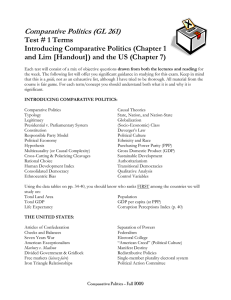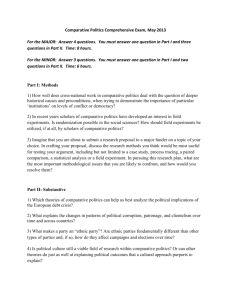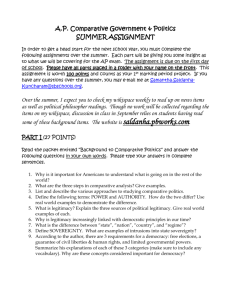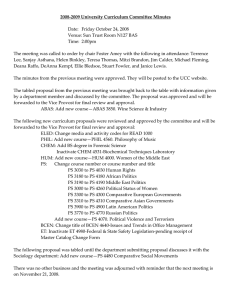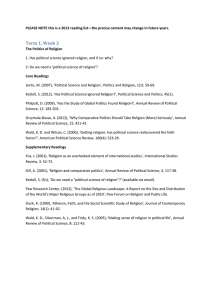Comparative Spring 2015 - School of Policy, Government, and
advertisement
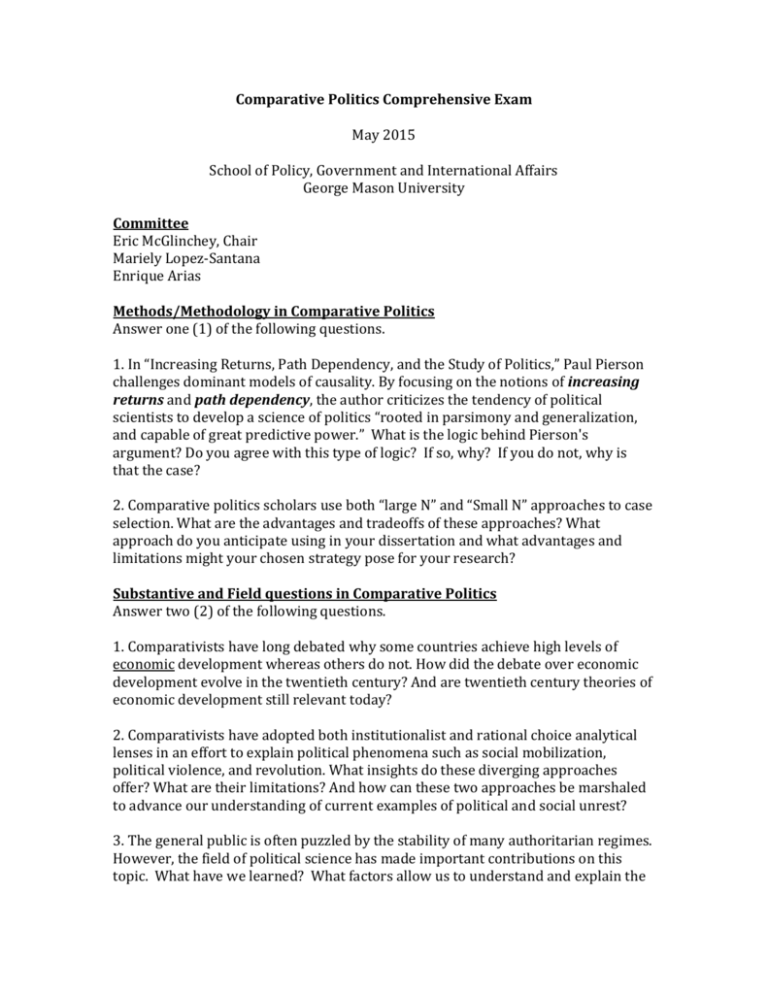
Comparative Politics Comprehensive Exam May 2015 School of Policy, Government and International Affairs George Mason University Committee Eric McGlinchey, Chair Mariely Lopez-Santana Enrique Arias Methods/Methodology in Comparative Politics Answer one (1) of the following questions. 1. In “Increasing Returns, Path Dependency, and the Study of Politics,” Paul Pierson challenges dominant models of causality. By focusing on the notions of increasing returns and path dependency, the author criticizes the tendency of political scientists to develop a science of politics “rooted in parsimony and generalization, and capable of great predictive power.” What is the logic behind Pierson's argument? Do you agree with this type of logic? If so, why? If you do not, why is that the case? 2. Comparative politics scholars use both “large N” and “Small N” approaches to case selection. What are the advantages and tradeoffs of these approaches? What approach do you anticipate using in your dissertation and what advantages and limitations might your chosen strategy pose for your research? Substantive and Field questions in Comparative Politics Answer two (2) of the following questions. 1. Comparativists have long debated why some countries achieve high levels of economic development whereas others do not. How did the debate over economic development evolve in the twentieth century? And are twentieth century theories of economic development still relevant today? 2. Comparativists have adopted both institutionalist and rational choice analytical lenses in an effort to explain political phenomena such as social mobilization, political violence, and revolution. What insights do these diverging approaches offer? What are their limitations? And how can these two approaches be marshaled to advance our understanding of current examples of political and social unrest? 3. The general public is often puzzled by the stability of many authoritarian regimes. However, the field of political science has made important contributions on this topic. What have we learned? What factors allow us to understand and explain the stability of authoritarian regimes? What issues are still unresolved? What is the future of this debate? 4. Does democracy promote domestic and international peace? Does democratization promote domestic and international peace? Please answer this question drawing on the existing literature and examples in the Global South. 5. What factors in state and social structure facilitate national development processes? For example, in the context of East Asia, Peter Evans has argued that “embedded autonomy” is a key dynamic is promoting successful policy change. In the context of Africa, Joel Migdal has argued that strong societies have contributed to state policy failure. Building on these examples but drawing on other work, discuss the role of political structures and state-society relations in promoting policy outcomes.
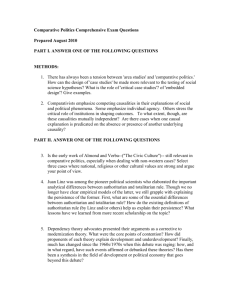



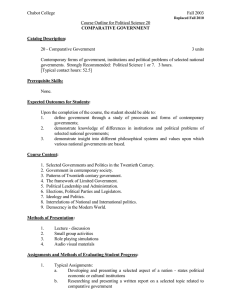
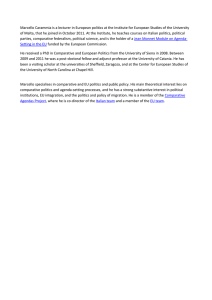
![Comparative Politics (GS 161) Test # 1 Terms and Lim [Handout])](http://s2.studylib.net/store/data/011707684_1-fe811697b4f1a95514b5eff13fe07ae7-300x300.png)
